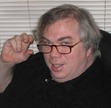The Writing Rookie Season 2, #5: Writing in the Plane Style
Cross-posted at A Motley Vision. For the complete list of columns in this series, click here.
Recently in a discussion about writing and revising over at the AML blog, William Morris (someone I greatly respect and often agree with) talked about being frustrated by his first drafts because "the language seems so mundane." Which resulted in one of those sinking feelings on my part — you know, like the one you get when the speaker in sacrament meeting talks about how bad things were when they missed their daily family scripture study, just when you were feeling good about reading scriptures together once last week. Or maybe like how you feel — at least, the way I feel — when I turn on the radio to one of those money management programs that keeps talking about how money I should already have saved for my retirement. But that's another (though not entirely unrelated) topic.
The point is that I don't really feel like much of a stylist. Sure, I revise — but it's not to achieve any kind of lyrical prose effects. Really, I have only 2 main goals: to make my writing quick, clear, and easy to read, and achieve some kind of consistency in my characters' voices. Those are hard enough.
#######
The last several weeks, I've been stuck at a plot point in my writing: one I need to research, and also a point where I need to sit down and do some detailed thinking about what happens next. Unfortunately, I've also been very busy with work commitments. So in order not to completely abandon my creative work — and steep myself in what I've already written, so as to (hopefully) inspire myself for my plotting — I've been reading and editing my existing draft.
For me, reading and editing is a lot like using a plane in working with wood. (Bear with me here.) I read through the text at something like normal speaking speed, which is hard for me not to do since I'm one of those people who hears words spoken inside my head as I read them. (The same thing happens while I'm writing, which leads to some interesting effects when I pause to try to figure out what the next word should be.) As I read, I'll hit rough spots: places where my mental voice stumbles, where I wonder what was going on, where I think "Gee, that's awkward" or say to myself, "My character wouldn't say that." The effect for me is a lot like running my fingers up and down a board to find the spots that seem rough or give me a splinter. And then I try to smooth them out, applying a least-needed-change philosophy: a word or two here, cutting something there, substituting a new paragraph for an old one. And then I reread to see if the problem seems to be fixed.
I've never been very good at woodworking, which probably has something to do with the reasons why using a plane doesn't work too well for me. I always worry that I'll gouge the wood — cause new places where it's rough —or keep on shaving away until there's a dip in the wood and it starts to lose its intended shape.
The same things can happen in editing. Trying to fix one problem can lead to another. Focusing too long and too hard on one part of the text can result in prose that looks fine up close but doesn't read that well as part of a longer passage. And sometimes I worry that the iterative process of reading, editing, reading, editing, results not necessarily in an improved text but rather one that is constantly in flux.
I try to guard against these dangers by imposing limits: not spending too long at one time looking at one particular place in my writing, rereading after each substantial edit from a point before where the revision started, rereading multiple times later on. One thing I find is that sections I draft later generally appear rougher to me than those I've already read and revised multiple times, which provides some evidence that my writing does in fact improve (for me as a reader, at least) as a result of my edits. And then when I reach the point where I can't tell if I'm improving things anymore, I stop revising: for that session, for that point in my process, sometimes for the story as a whole. There are doubtless still improvements that could be made, but I'm no longer capable of knowing with any certainty what they are.
#######
I remember reading once that Isaac Asimov wrote only two drafts: the initial draft that he banged out on a typewriter, and then the revised draft that included whatever changes he wound up making in the process of typing it all out again.
I won't go so far as Orson Scott Card and call Asimov "the finest writer of American prose in our time, bar none" (Maps in a Mirror, p. 270). But at the top of his form — say, with "The Bicentennial Man" (the novella; I've not read the novel) — Asimov's style is remarkably effective: clean, clear, distinctive, and capable not only of telling a story but also of communicating and prompting feeling. It's not lyric, but it does the job.
My point isn't that Asimov's style is "right" (not something I believe he ever argued), but rather that it is what was right for him. I have my own process. Whether it works or not — that's something I'm still trying to figure out.



